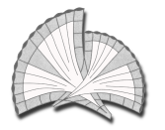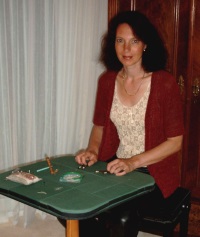| Pieces of information about the Thread database |
|---|
|
For getting into this database, which will show the actual measuring data, you will need a personal code. With purchasing the book "Lace threads in dD", you will immediately get your personal code. You can find the key code on the last inside cover of the book.
to my newest thread measurements for a period of one year. These will then be updated regularly and are available for you. Furthermore, many links are set up, so that you may order directly from the producer of the yarn if wanted. You will find here the always updated data of threads from "Lace threads in dD". Thus, the publishing of supplementary sheets will permanently be cancelled. Logging in:For logging in please enter your key code first. After entering your name and email address you will get free access to my data base for one year.Renewal option:For renewing to use the database please repeat your key code, name and email-address; this is necessary because it might happen that your address or name has changed in the meantime.Fees for continuing the use of the database: 4,- Euro for 1 year; 18,- Euros for 5 years. Please choose your favourite way of payment : Pay Pal or money transfer. * Pay-Pal: You are automatically forwarded to my PayPal account where you have to fill in Your choice of fees in Euro, please. * Money transfer: Automatically You will get an e-mail with my bank account and the price list. On receipt of payment the access to this bata base will be opened within a few days. |
| The object of this database |
|---|
This summary of thread thickness measurement is grown out of the original doctorate Thread and Pricking: A Partnership.The there quoted measurement results of all available old and new lace-making threads were listed there as uniform average thread diameters. The underlying measuring system yields thread diameters in 10 micrometre units, which can be related directly to the size of a lace pricking! Examples are given below.Because new threads are continually being produced, the 20-year old data have gradually become out of date. The work provides an up-to-date review of lace-making threads (including synthetic threads). Details of other thread numbering systems and their interrelationships are to be found in the original publication: Thread and Pricking: A Partnership by the same author. To supplement this new book, a database is set up, starting 2013. You obtain access to the database by purchasing the book „Lace threads in dD”. On the last page of the book, there is also your key code. This will provide you with free access to my newest thread measurements for a period of one year. These will then be updated regularly and are available for you. Furthermore, many links are set up, so that you may order directly from the producer of the yarn if wanted. |
| Structure of the database |
|---|
|
You will find a list of all the thread producers in alphabetical order. The country of production is signed by the national flag. If there are several locations or countries, then the location is signed “international”. Many producers are no longer in business. Information as to where the products can still be obtained is provided if the producers have permitted this. * as internet addresses or * sources in the form of addresses or telephone numbers * if no sources are given, then please activate “search machines” * second-hand threads can also be found via search machines. The raw materials used to make the threads are given in form of the typical international quality marks. The letters “S” and “Z” describe the direction of twist in the threads.
You can select all yarns per producer, alphabetically or sorted by dD values. With the search button, you can search a certain dD value or a name of a yarn. |
| Why this ordering according to my measuring procedure? |
|---|
|
This numbering system in dD (average thread diameter dD 100 = 1 mm, dD 10 = 0.1 mm) makes it possible for lace-makers to easily calculate the thickness of thread required for a given size of lace pricking. Especially when working specific classical kinds of bobbin lace (Flanders lace, Valenciennes, Point de Paris, Torchon) the thickness of the thread to be used depends directly on the lace pricking and so it is necessary to determine correctly the thread thickness required for the pin distance in the pricking. For a pin distance which is 10% larger than in the original pricking we need a thread which is 10% thicker. The dD values are of singular advantage here! With no other thread numbering system, the calculation is so simple. If the dD number is 10% larger, the thread is really 10 % thicker. The measuring procedure does not yield values which are valid for just one raw material but applies equally to all raw materials. It can be used for all threads which are round in cross-section. Flossy threads can be laid much further apart; for these, therefore, only a minimum dD number can be given. Examples on the Homepage. |


